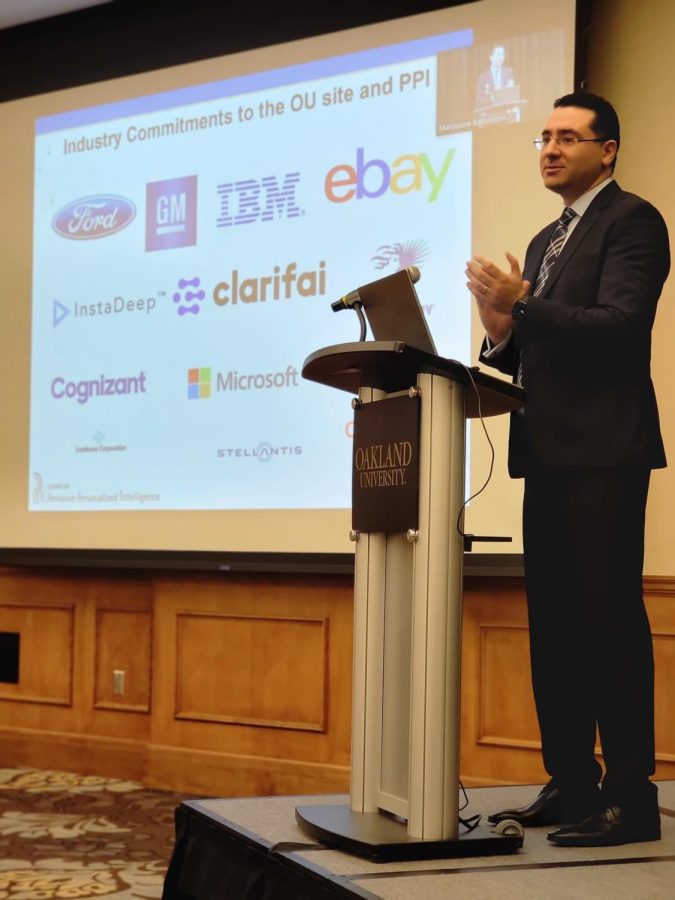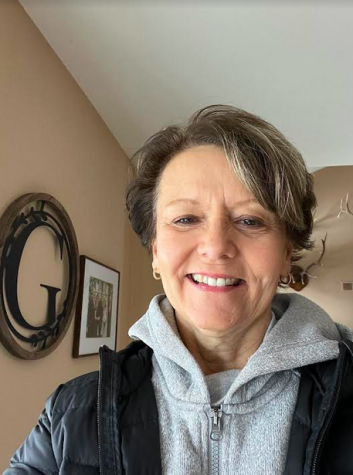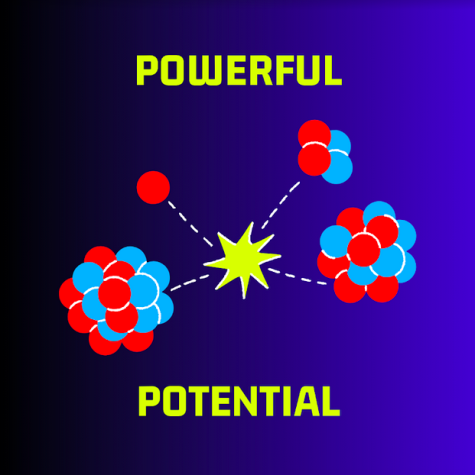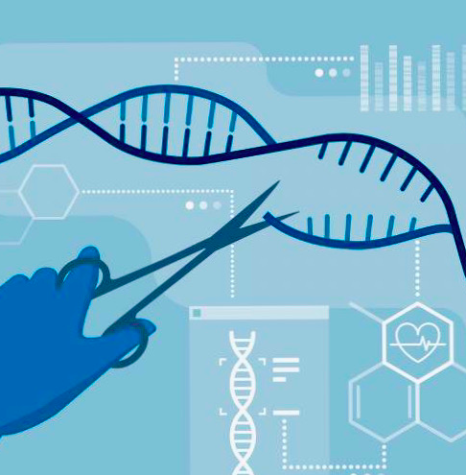AI and software engineering with Dr. Kessentini
Photo courtesy of Marouane Kessentini
Dr. Marouane Kessentini leading the NSF IUCRC Center on pervasive AI at OU.
Dr. Marouane Kessentini is the professor and interim chair of the Department of Computer Science and Engineering, and is part of Oakland University’s Artificial Intelligence Research (OUAI) Center. In addition to artificial intelligence, his research interests and classes revolve around software engineering.
Kessentini is set to receive OU’s Researcher of The Year award, which recognizes the faculty member at OU who has achieved the largest amount of competitive grant funding in the fiscal year. He will also receive the Most Active Research award, which is presented to the faculty member awarded the highest number of grants during the fiscal year.
“We are trying to improve the quality of software, which is used basically everywhere: in transportation, health industries and so on,” Kessentini said. “We work to automatically detect errors in bots and softwares, making them easier to use and adapt. This is done in an automatic way.”
An example of their work is building an infrastructure that will aid those from other fields or those who have lower levels of proficiency in software engineering.
“We built a bot that will do an automated evaluation of the quality of your code and give you guidance,” he said. “This helps give a more simple way for people who may not be experts in computer programming, such as those in the science community in physics and biology, to create code.”
Kessentini has several students working with him in this research — many of whom are females in what has been considered a predominantly male dominated field. He is very proud of their accomplishments in academia, research and industry work.
“Last summer, they actually went to validate their tools built during the academic year on a larger scale in industry settings at companies like Ford,” Kessentini said. “This was facilitated by the National Science Foundation. We spend a lot of time in our lab trying to address our industry partners’ problems.”
Kessentini has a masters in artificial intelligence, but has decided to “go out of his comfort zone” through working in software engineering. He believes the two go hand in hand.
His interest in this field was also inspired by many natural processes — such as transplants and the immune system — as well as connecting with industries.
“I use an approach called the artificial immune system to determine what is good and normal behavior of the software, and also have another contribution related to that about what is called code transplantation,” Kessentini said. “It is similar to the concept of organ transplantation. The idea is to develop a new code that is integrated into an existing software.
“I am also interested in providing scalable solutions in industry and building scientific foundations that can be used in practice,” he continued.
There are many exciting events and opportunities taking place in computer science at OU. Funded by the National Science Foundation, the Industry-University Cooperative Research Centers (IUCRC) program is set to begin soon at OU.
“There are many industry partners who are members, and our faculty and students will present ideas and have projects funded,” Kessentini said. “This is done in collaboration with two other universities: The University of Colorado Boulder and Oregon State University. More than 15 faculty and students are set to present research we are doing in the center.”
Additionally, OU is organizing a prestigious international research conference on software engineering (ASE 2022) next week, from Oct. 10-14. Over 200 people will be traveling internationally to attend. There will be distinguished speakers coming from both academia and industries such as Facebook.











